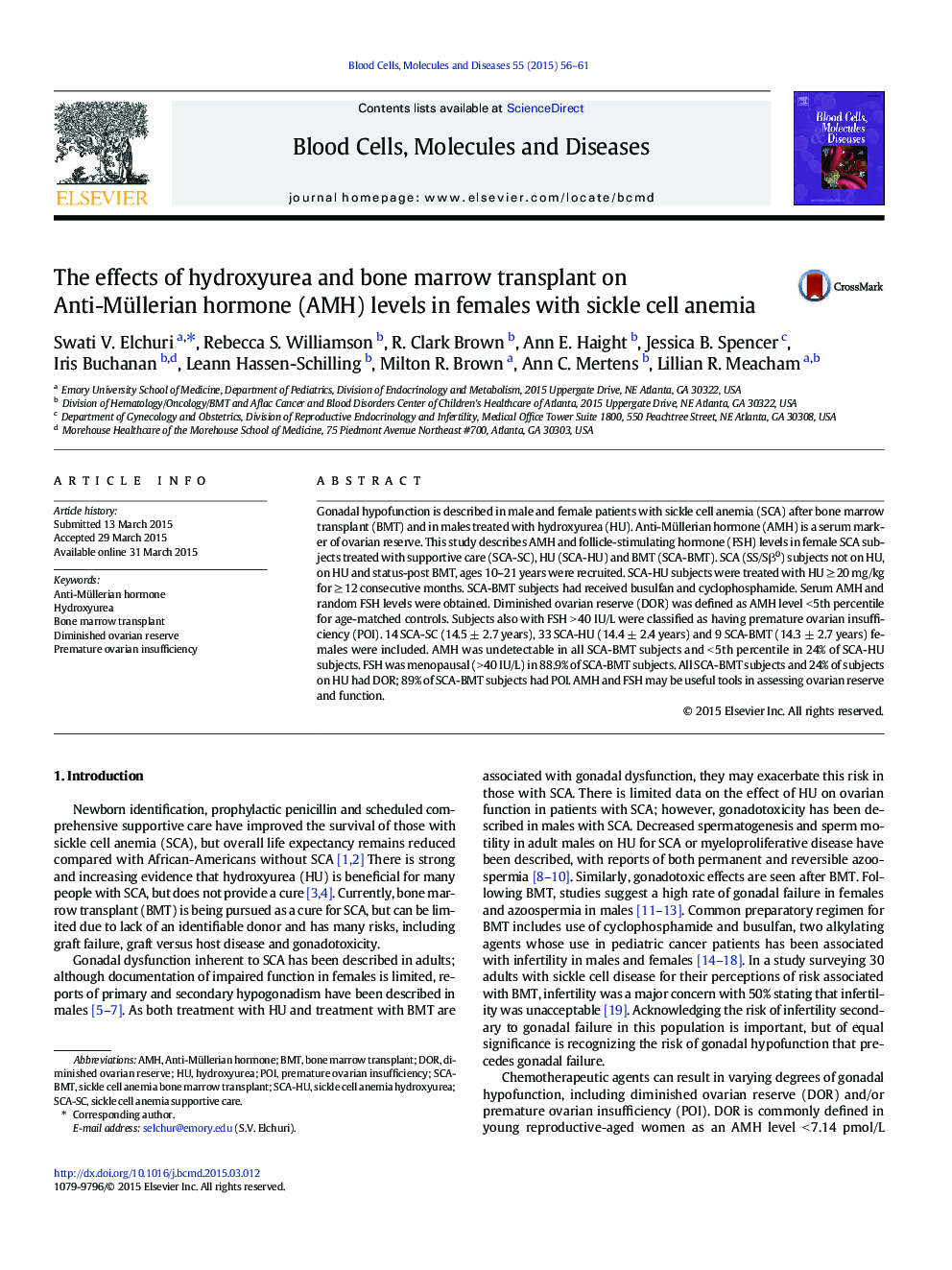| Article ID | Journal | Published Year | Pages | File Type |
|---|---|---|---|---|
| 2827073 | Blood Cells, Molecules, and Diseases | 2015 | 6 Pages |
Gonadal hypofunction is described in male and female patients with sickle cell anemia (SCA) after bone marrow transplant (BMT) and in males treated with hydroxyurea (HU). Anti-Müllerian hormone (AMH) is a serum marker of ovarian reserve. This study describes AMH and follicle-stimulating hormone (FSH) levels in female SCA subjects treated with supportive care (SCA-SC), HU (SCA-HU) and BMT (SCA-BMT). SCA (SS/Sβ0) subjects not on HU, on HU and status-post BMT, ages 10–21 years were recruited. SCA-HU subjects were treated with HU ≥ 20 mg/kg for ≥ 12 consecutive months. SCA-BMT subjects had received busulfan and cyclophosphamide. Serum AMH and random FSH levels were obtained. Diminished ovarian reserve (DOR) was defined as AMH level < 5th percentile for age-matched controls. Subjects also with FSH > 40 IU/L were classified as having premature ovarian insufficiency (POI). 14 SCA-SC (14.5 ± 2.7 years), 33 SCA-HU (14.4 ± 2.4 years) and 9 SCA-BMT (14.3 ± 2.7 years) females were included. AMH was undetectable in all SCA-BMT subjects and < 5th percentile in 24% of SCA-HU subjects. FSH was menopausal (> 40 IU/L) in 88.9% of SCA-BMT subjects. All SCA-BMT subjects and 24% of subjects on HU had DOR; 89% of SCA-BMT subjects had POI. AMH and FSH may be useful tools in assessing ovarian reserve and function.
